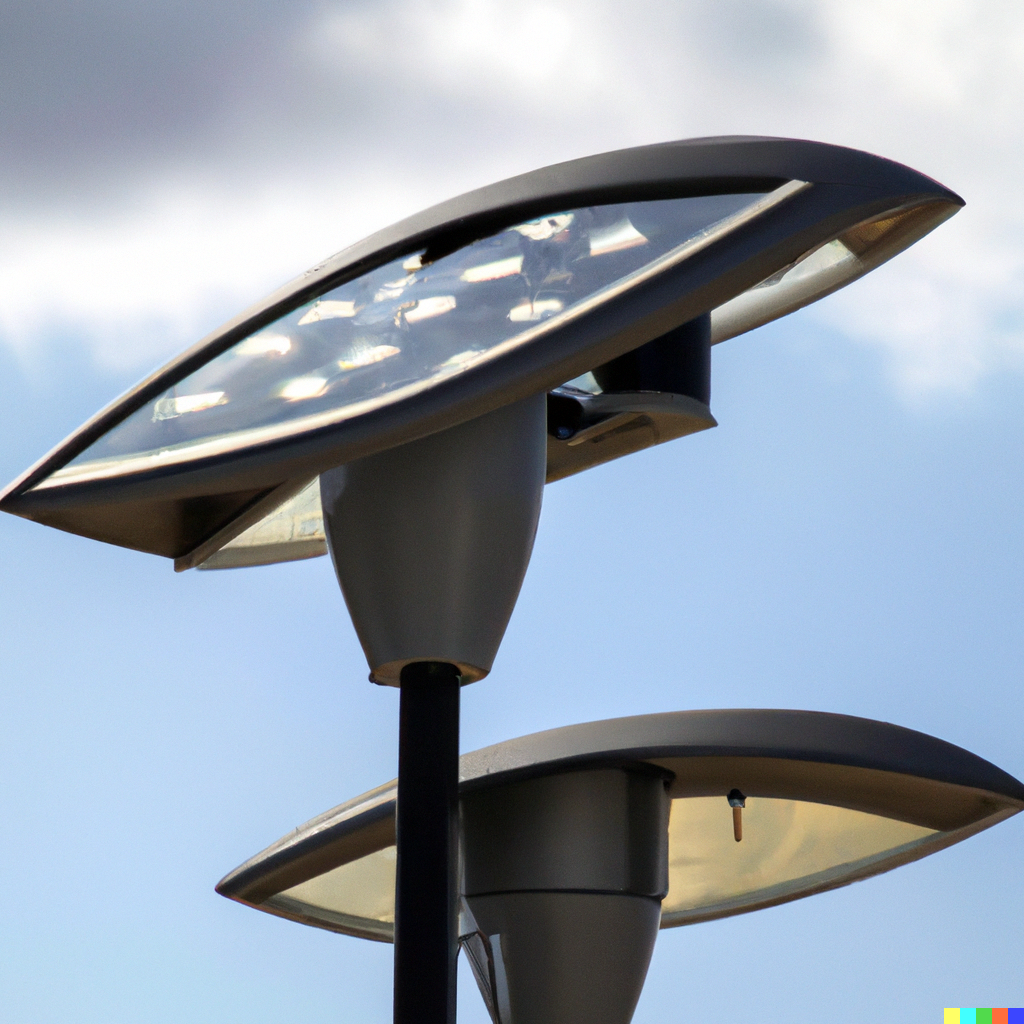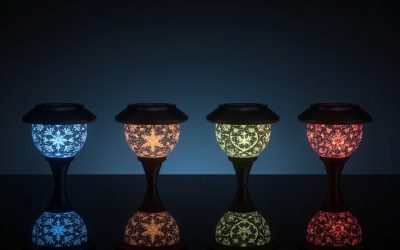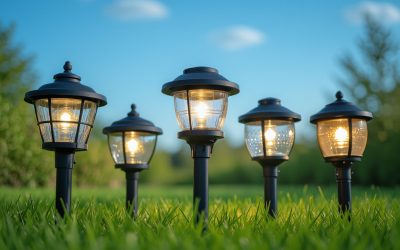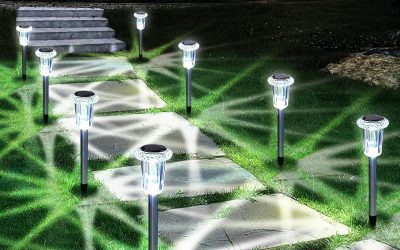Table of Contents
Introduction
As the demand for eco-friendly outdoor lighting solutions grows, solar path lights have emerged as a popular choice among homeowners and landscape enthusiasts. These innovative lights harness the power of the sun to illuminate pathways, gardens, and outdoor spaces. In this comprehensive guide, we will explore everything you need to know about solar path lights, including their benefits, working principle, types, installation tips, maintenance practices, and more.
Understanding Solar Path Lights
Solar path lights operate on a simple and efficient principle. They consist of a solar panel, LED bulbs, rechargeable batteries, and light sensors. The solar panel absorbs sunlight during the day, converting it into electricity and storing it in the batteries. As the sun sets and darkness falls, the light sensors activate the LED bulbs, providing illumination throughout the night.
Types:
There is a wide range of solar path lights available in the market, catering to different design preferences and installation requirements. Some common types include stake lights, hanging lights, and post lights. Stake lights are inserted directly into the ground, while hanging lights can be suspended from branches or structures. Post lights, on the other hand, are mounted on poles or posts. Each type offers variations in design, materials, and installation methods.
Benefits:
Solar path lights offer numerous benefits that make them an attractive choice for outdoor lighting:
- Energy Efficiency: By harnessing solar power, these lights reduce reliance on traditional energy sources, leading to lower electricity consumption and reduced carbon footprint.
- Cost Savings: Solar path lights eliminate the need for electricity, resulting in significant savings on monthly utility bills.
- Low Maintenance: Once installed, solar path lights require minimal maintenance. They are self-powered and do not require wiring or complex electrical work.
- Aesthetics and Safety: These lights enhance the beauty and safety of outdoor spaces, illuminating pathways and creating an inviting ambiance for guests and family members.
Factors to Consider When Buying:
When purchasing solar path lights, several factors should be taken into consideration:
- Brightness Levels: Look for lights with adequate brightness to suit your needs, considering factors such as the size of the area to be illuminated and personal preferences.
- Battery Capacity: Opt for lights with higher battery capacity to ensure longer illumination hours, especially during darker seasons or days with limited sunlight.
- Durability: Check for weather-resistant and durable materials that can withstand outdoor conditions such as rain, heat, and frost.
- Waterproof Ratings: Look for lights with high waterproof ratings to ensure they can withstand exposure to rain or water splashes.
Installation and Placement Tips
Installing solar path lights is a straightforward process. Follow these steps for successful installation:
- Choose the Right Location: Select areas along pathways or in gardens that receive ample sunlight during the day for optimal charging.
- Secure the Lights: Ensure the lights are firmly inserted into the ground or securely mounted on posts or poles, providing stability and preventing dislodging.
- Sun Exposure: Position the solar panels of the lights to face the south or where they can receive the maximum sunlight exposure.
- Spacing Between Lights: Maintain an appropriate distance between each light to achieve an even and visually appealing illumination effect.
- Landscape Considerations: Take into account the overall landscape design and consider how the lights can best complement the surrounding environment.
Maintenance and Troubleshooting
To keep your solar path lights in optimal condition, follow these maintenance practices:
- Cleaning: Regularly clean the solar panels to remove any dust, dirt, or debris that may hinder the absorption of sunlight.
- Battery Replacement: If you notice a significant decrease in illumination time or overall performance, consider replacing the rechargeable batteries.
- Obstruction Check: Periodically inspect the lights for any obstructions that might cast shadows on the solar panels, such as overgrown plants or fallen leaves.
- Troubleshooting: If your lights experience dimming, short battery life, or malfunctioning sensors, try resetting the lights or contacting the manufacturer for further assistance.
Frequently Asked Questions (FAQs)
- How long do solar path lights last? Solar path lights typically last for several years with proper maintenance. The lifespan can vary depending on the quality of the lights and the batteries used.
- Do solar path lights work on cloudy days? Solar path lights can still operate on cloudy days, but their performance may be reduced due to limited sunlight absorption. However, advancements in solar technology have improved the efficiency of these lights in low-light conditions.
- Are solar path lights durable in different weather conditions? Most solar path lights are designed to withstand various weather conditions. Look for lights with high waterproof ratings and durable construction to ensure their longevity.
Conclusion
Solar path lights offer an eco-friendly and cost-effective solution for illuminating pathways and outdoor spaces. By understanding their working principle, exploring the different types available, considering important factors when purchasing, and following proper installation and maintenance practices, you can enjoy the benefits of solar path lights for years to come. Embrace the beauty, convenience, and sustainability of these lights and transform your outdoor areas into welcoming and well-lit spaces.




